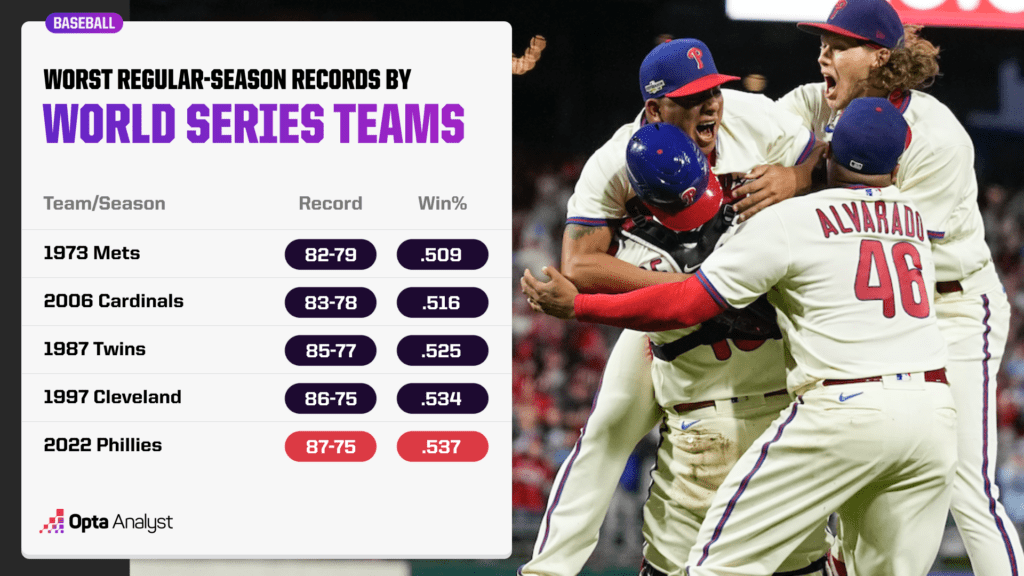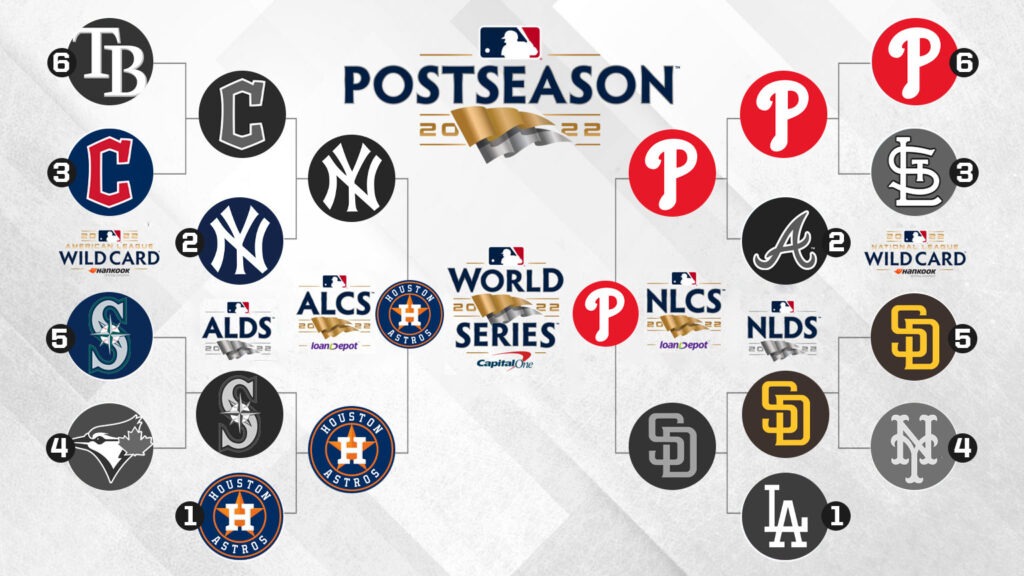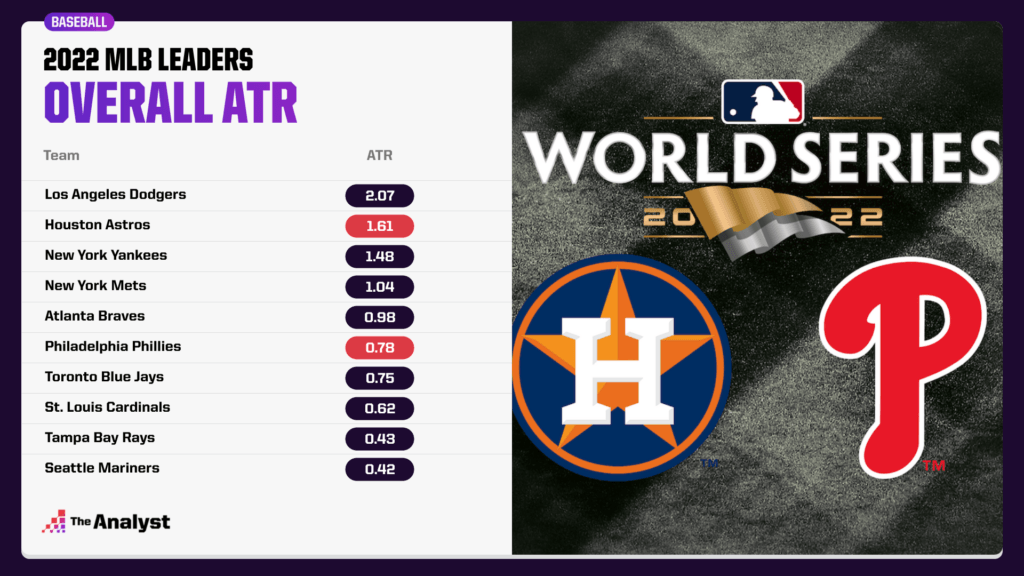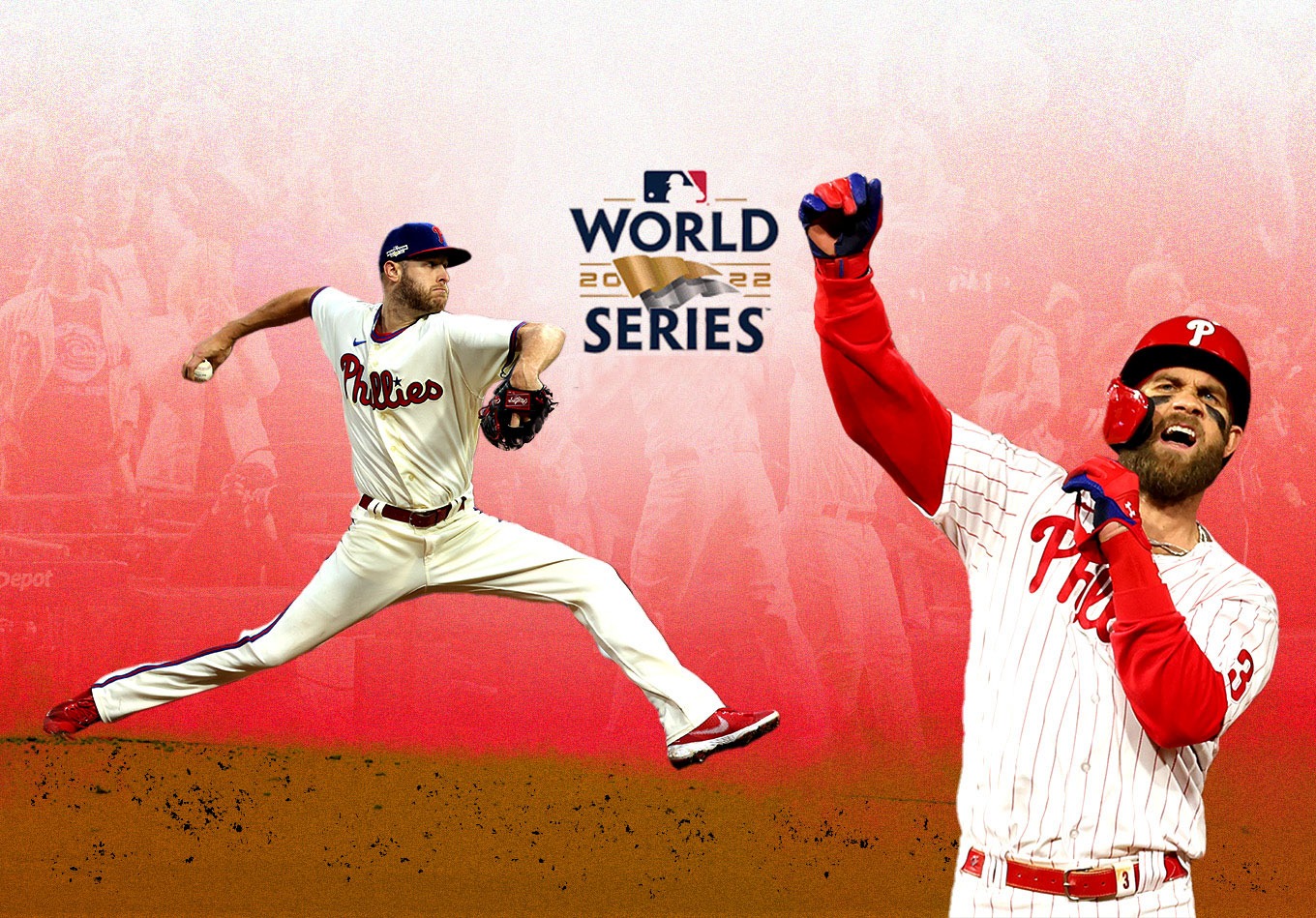The Philadelphia Phillies did the unthinkable: they parlayed an 87-win season into a ticket to the World Series.
One by one, the Phils have been taking down the favorites: first, it was the National League Central champion St. Louis Cardinals in the Wild Card Series. Then, it was the reigning World Series champion Atlanta Braves in the NL Division Series; and last but not least, they knocked out the San Diego Padres in the Championship Series.
Much like the 2017-18 Philadelphia Eagles, the “underdog” label seems to suit the Phillies just fine.
2021 NL MVP Bryce Harper (.419/.444/.907, five home runs and a 1.351 OPS in 11 playoff games) has been the most influential position player in the World Series run, although Rhys Hoskins and Kyle Schwarber deserve a lot of credit, too.

The pitching, however, has been very solid, and they have been able to rely on talented right-hander Zack Wheeler all year long.
Wheeler wasn’t able to surpass 200 innings during the regular season, but in his 153 frames, he was fantastic with a 2.82 ERA and a 2.95 FIP that put him among the NL’s elite. He also finished with just 34 walks and 163 strikeouts.
In the playoffs, he has been even better. He has given the Phillies 25.1 innings while posting an incredible 1.78 ERA. His 0.51 WHIP is absolutely ridiculous, as is his 25 Ks and just three walks. He has allowed just 10 hits in those 25.1 frames. That’ll do.
Part of the reason behind his amazing postseason performance is his increased fastball velocity. He’s averaging 97.2 mph on his fastball after checking in at 95.9 during the regular season. That’s a 1.3 mph increase for those keeping score.
Wheeler is also thriving because he seems to be using his excellent breaking stuff even more in the playoffs, particularly his curveball. He’s throwing fewer sliders and cutters and has increased the use of the hook from 11.9% to 18.0% in October. You have to wonder is his rotation mate Aaron Nola, a guy who throws curveballs more than a quarter of the time, has influenced him there.
Wheeler is now using his curveball as a true put-away weapon in the playoffs: its usage with two strikes went from 16.3% in the regular season to a whopping 30.9% in the playoffs.
He’s attacking lefties with that beautiful curveball 41.5% of the time in the postseason with two strikes, but he mixes in more sliders against righties. You could say he’s moved away from the two-seamer versus righties with two strikes in the playoffs, favoring his breaking stuff and going for the kill.
Wheeler is the rare pitcher who can get the ball for six or seven innings, get ground balls in bunches (46.4% in the regular season) as well as strikeouts. That’s a fine combo to have in your frontline pitcher.
Advanced metrics not only say he was good – they say he was elite. Raw value, which analyzes performance on a per-pitch basis instead of looking at the outcome of the at-bat, really likes him. This stat examines plate discipline, bat-missing ability, contact profile, and other things.
We have total RV and RV +/- (it’s RV+ for hitters and RV- for pitchers). The latter is a rate stat, as 100 is considered league average performance. For hitters, a higher RV+ means better performance; while lower is better for pitchers.
Wheeler had a 70 RV- in the regular season, considerably better than the league-average value. However, perhaps more impressive was his minus-21.6 total RV, which ranks him 16th in the league in a season in which he barely pitched past 150 innings. Incredible.
To analyze all phases of pitching, we use three metrics besides raw value. One is whiff+, which examines similar factors to those of RV to determine the rate at which a hurler misses bats. Another one is strike+, which assesses how good a pitcher is at generating strikes, both called and swinging. And last but not least, we have command+, which examines intent: whether the pitcher achieves what he wants with the ball or not.
For all these stats, 100 is considered average and higher is better. Wheeler is one of only a handful of hurlers who rate as above average in all three facets of pitching during the regular season: whiff (119), strike+ (104) and command+ (119, which would rank in the top five had he qualified). So, to sum up, he’s good at getting strikes, great at missing bats, and has elite command.

Now that we have taken an in-depth look at their ace, let’s see how the Phillies rank in other areas compared to the league average club.
To do that, we will use our adjusted team ratings (ATR). ATR normalize a team’s performance (for any sport) from league environmental factors that can either inflate or deflate its numbers. For baseball, they measure how many runs per nine innings better or worse teams are compared to the average club for a given season (including the playoffs).
Why do we include the playoffs? For added context: the Astros have been a fairly consistent team, but the Phillies have performed much better in October and that deserves to be weighed in any analysis. The bigger the number, the better for offense and the opposite is true for defense.
Let’s take a look:
Offense: This offense ranks fourth in MLB in our team ratings at 0.59 runs per nine better than the average club. The Phils rank second in postseason OPS with .749, and they are first if we remove the Toronto Blue Jays and their two games played.
Besides Harper, this unit is packed with talent: they have Hoskins (five homers and 11 RBIs in the postseason), Schwarber (three blasts and a .832 OPS), JT Realmuto (10 hits, two bombs in October) and other skilled hitters such as the improved Brandon Marsh, Alec Bohm and veteran middle infielder Jean Segura. You also have to include Nick Castellanos’ considerable potential here.
Navigating this lineup won’t be easy for Houston: it’s better than what the New York Yankees fielded in the ALCS, for example.
Pitching/Defense: In our ATR, defensive ratings basically encapsulate runs against, so it considers pitching and fielding. The Phillies have a surprisingly good pitching staff, but their defense is below average, dropping their ranking here to 12th at minus-0.19.
Besides Wheeler and Nola (who has a solid 3.12 ERA in the playoffs), they have some additional difference-makers on the staff: Seranthony Dominguez is a relief ace, and Jose Alvarado can be one if he keeps his walks in check. Bailey Falter, Noah Syndergaard, Ranger Suárez and Kyle Gibson are all good starters, but you do have to wonder if they are good enough to navigate the Astros’ potent lineup.
David Robertson, Andrew Bellatti, Connor Brogdon, Brad Hand and Zach Eflin complete a solid, if unspectacular bullpen.

Overall: The Phillies have a solid team that is, apparently, built for the playoffs. Harper leads the offense and Wheeler is a bonafide ace, and you can’t really ask for better star players. The Phillies do have to worry about the rest of the rotation besides Wheeler and Nola dealing with the Astros’ hitters, as well as the back of their bullpen.
The Phillies’ 0.78 overall ATR was sixth in MLB (see above), which suggests they should be competitive. At the very least, they will probably end the Astros’ undefeated run.
Are they ready to take it up a notch and shock the world?
Research support provided by Stats Perform’s Quinton Bonnell.
